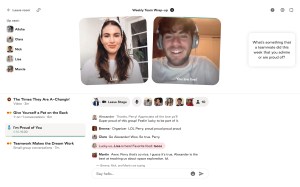The only thing happening faster than tech mobility right now is the speed at which our early bird price for TC Sessions: Mobility 2021 will disappear. You have just four days left to save $100 to our June 9 deep-dive exploration into the current and future state of mobility and transportation.
Buy your pass to TC Sessions Mobility 2021 before the price increase goes into effect on Thursday, May 6 at 11:59 pm (PT).
The event is virtual (thanks a bunch, you nasty pandemic), but the information you’ll glean and the worldwide connections you’ll make are very real. The global nature of the opportunities waiting for you to find is a big democratizing benefit of going virtual.
The day comes jam-packed with presentations, one-on-one interviews and breakout sessions with the top founders, investors and makers in mobility. Don’t stress about missing out over a schedule conflict — your pass includes access to video-on-demand once the event ends.
Here’s what Rachael Wilcox, a creative producer at Volvo Cars, told us about her experience at TC Sessions: Mobility 2020.
“I was impressed with the virtual platform. It was easy to navigate and a great format for asking questions. Combining live-stream and VOD options provided schedule flexibility, which let me be more focused and attend more presentations than I could at a live event.”
Let’s take a quick look at just some of the topics and the people who will cover them. Check out the agenda here and plan your strategy.
- Will Venture Capital Drive the Future of Mobility? Clara Brenner, Quin Garcia and Rachel Holt will discuss how the pandemic changed their investment strategies, the hottest sectors within the mobility industry, the rise of SPACs as a financial instrument and where they plan to put their capital in 2021 and beyond.
- Equity, Accessibility and Cities: Can mobility be accessible, equitable and remain profitable? We have brought together community organizer, transportation consultant and lawyer Tamika L. Butler; Remix by Via co-founder and CEO Tiffany Chu and Revel co-founder and CEO Frank Reig to discuss how (and if) shared mobility can provide equity in cities, while still remaining a viable and even profitable business. The trio will also dig into the challenges facing cities and how policy may affect startups.
- EV Founders in Focus: We sit down with the founders poised to take advantage of the rise in electric vehicle sales. This time, we will chat with Kameale Terry, co-founder and CEO of ChargerHelp! a startup that enables on-demand repair of electric vehicle charging stations.
If you’re into mobility, you can’t afford to miss the information, trends, networking and connection opportunities you’ll find at TC Sessions: Mobility 2021. You also can’t afford to miss out on the early bird price. Buy your $95 pass before Thursday, May 6 at 11:59 pm (PT), and you’ll save $100.
Is your company interested in sponsoring or exhibiting at TC Sessions: Mobility 2021? Contact our sponsorship sales team by filling out this form.

